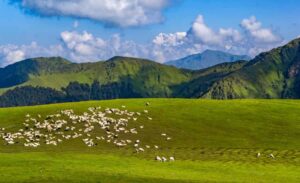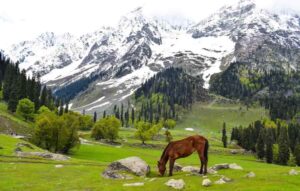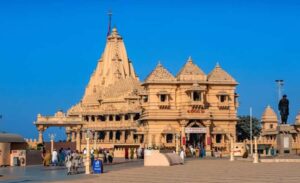Best Time to Visit Sonmarg
Sonmarg, a mesmerizing destination nestled in the heart of the Indian Himalayas, is a haven for nature enthusiasts and adventure seekers. Located in the Ganderbal district of Jammu and Kashmir, this idyllic town is renowned for its pristine landscapes, lush meadows, and snow-capped peaks. Sonmarg, which translates to “Meadow of Gold,” is aptly named, as it glistens like a treasure trove throughout the year. To make the most of your visit, it’s essential to understand the different seasons, weather conditions, and temperatures that Sonmarg experiences. In this guide, we will delve into the best times to visit Sonmarg based on the weather, temperature, and climate.

Sonmarg Climate Overview
Sonmarg enjoys a temperate climate throughout the year, making it a year-round destination. However, its weather is distinctly influenced by the changing seasons. To help you plan your visit, let’s explore the climate of Sonmarg in detail:
Spring (March to May)
Temperature: During spring, Sonmarg experiences a gradual rise in temperature. The daytime temperature ranges from 10°C to 15°C (50°F to 59°F), while nights can be quite chilly, with temperatures dropping to -2°C to 3°C (28°F to 37°F). As the season progresses, temperatures become more pleasant.
Weather: Spring is a delightful time to visit Sonmarg, as the valley comes to life with the blossoming of flowers. The days are generally sunny, with clear skies, making it an ideal time for sightseeing and trekking.
Summer (June to August)
Temperature: Summer in Sonmarg is relatively mild, with daytime temperatures hovering between 15°C and 25°C (59°F to 77°F). Nighttime temperatures are comfortable, ranging from 7°C to 10°C (45°F to 50°F).
Weather: This is the peak tourist season in Sonmarg due to its pleasant weather. The meadows are covered with a blanket of vibrant wildflowers, and the surrounding mountains are inviting for trekkers. The days are warm and sunny, while occasional showers can be expected, so packing rain gear is advisable.
Autumn (September to November)
Temperature: Autumn marks the transition from summer to winter. Daytime temperatures range from 10°C to 20°C (50°F to 68°F), and nights become cooler, with temperatures ranging from 0°C to 7°C (32°F to 45°F).
Weather: This is a fantastic time to visit Sonmarg as the landscapes are bathed in hues of gold and red. The weather remains pleasant, and the occasional showers from the monsoon season subside. It’s an excellent season for trekking and photography.
Winter (December to February)
Temperature: Winter in Sonmarg is harsh and cold, with daytime temperatures staying around 0°C to 6°C (32°F to 43°F). Nighttime temperatures often drop well below freezing, ranging from -10°C to -15°C (14°F to 5°F). This is the time when Sonmarg receives heavy snowfall.
Weather: The town becomes a winter wonderland during this season. Snow blankets the entire region, making it a paradise for snow sports enthusiasts. It’s not recommended for regular tourists unless you’re prepared for extremely cold conditions and want to experience the serene, snowy landscape.
The Best Times to Visit Sonmarg
Now that we’ve examined the seasonal variations in Sonmarg’s climate, let’s delve into the best times to visit based on different interests and activities:
Best Time for Snow Enthusiasts: Winter (December to February)
If you are an avid fan of winter sports like skiing, snowboarding, and snowshoeing, then winter is your ideal season to visit Sonmarg. The landscape is covered in a pristine layer of snow, creating a magical atmosphere. Make sure to dress warmly and check for road conditions, as heavy snowfall can sometimes affect accessibility.
Best Time for Trekking and Adventure: Spring (March to May) and Autumn (September to November)
Spring and autumn are perfect for trekking and adventure seekers. The weather is mild, and the trekking trails are at their most scenic during these seasons. Spring offers the added advantage of blooming flowers, while autumn showcases vibrant fall colors. These periods provide an opportunity to explore the Thajiwas Glacier, Zoji La Pass, and numerous other picturesque trekking routes.
Best Time for Family and General Tourism: Summer (June to August)
Summer is the most popular season for general tourism in Sonmarg. The weather is pleasant, and the meadows are in full bloom, making it an excellent time for family vacations and sightseeing. The Lidder River and the surrounding valleys offer stunning landscapes for nature lovers and photographers.
Best Time for Angling and Fishing: Summer (June to August)
If you are an angling enthusiast, summer is the best time to visit Sonmarg. The Lidder River is well-stocked with trout and mahseer, offering a great fishing experience. Make sure to obtain the necessary permits before indulging in this activity.
Best Time for Solitude and Photography: Early Spring and Late Autumn
If you prefer solitude and capturing the pristine beauty of Sonmarg without the crowds, consider visiting in early spring or late autumn. During these times, you’ll have the opportunity to enjoy the serene landscapes in a quieter ambiance, perfect for photography and introspection.
Special Events and Festivals
Sonamarg Thajiwas Glacier Festival: This annual event takes place in July and celebrates the beauty of the Thajiwas Glacier. It includes cultural performances, adventure sports, and local handicraft exhibitions.
Baisakhi Festival: Celebrated in April, Baisakhi marks the beginning of the harvesting season in Sonmarg. This is an excellent time to experience the local culture and traditions.
Conclusion
Sonmarg, with its ever-changing seasons, offers a wide range of experiences throughout the year. Whether you’re a winter sports enthusiast, an adventure seeker, or a family looking for a peaceful vacation, there’s a perfect time to visit this beautiful valley. Make sure to plan your trip based on your interests and preferences, and be prepared for the specific weather and temperature conditions of the season you choose. No matter when you visit, Sonmarg’s enchanting beauty will leave you with lasting memories of this “Meadow of Gold.”
Must Read:





